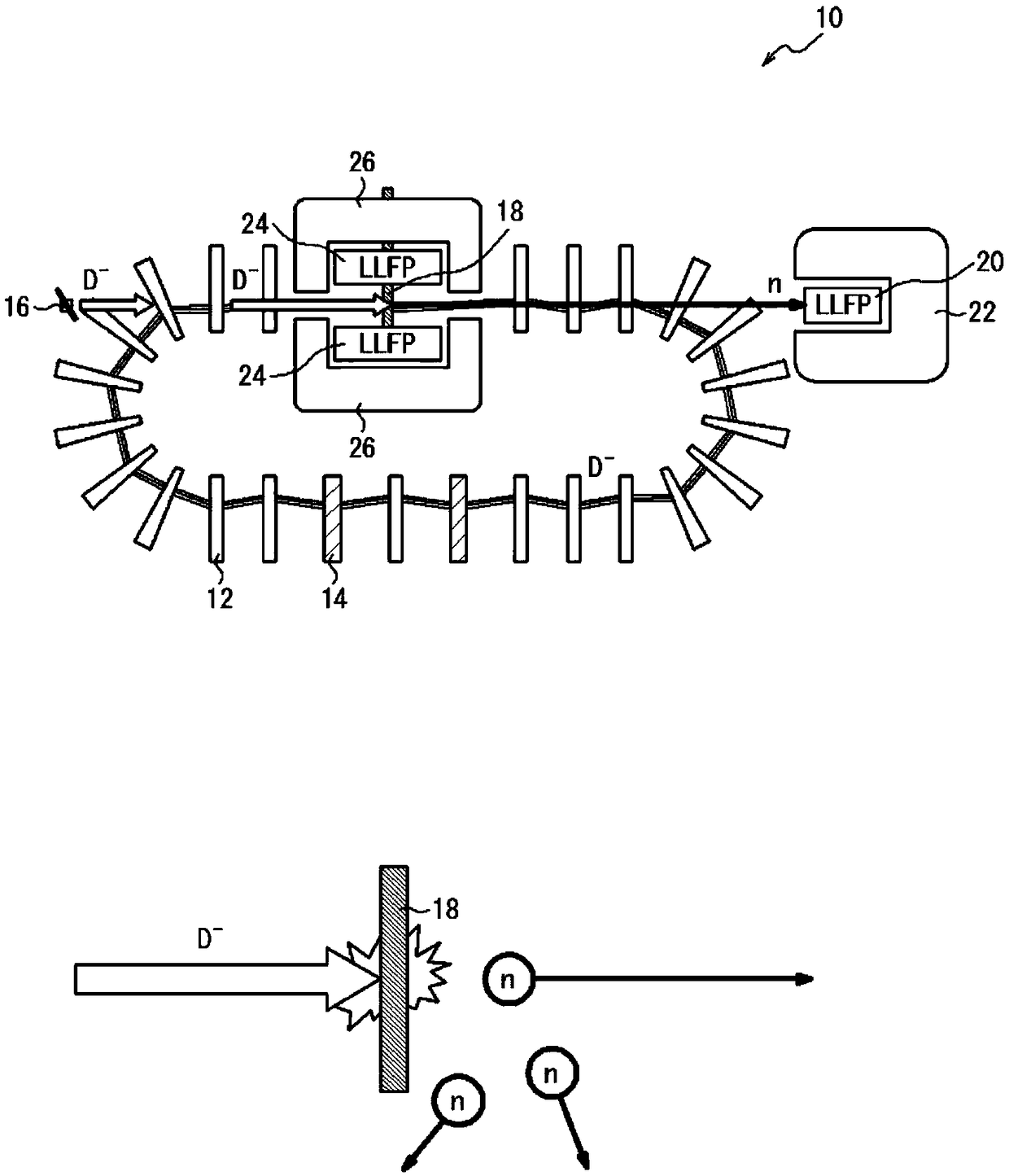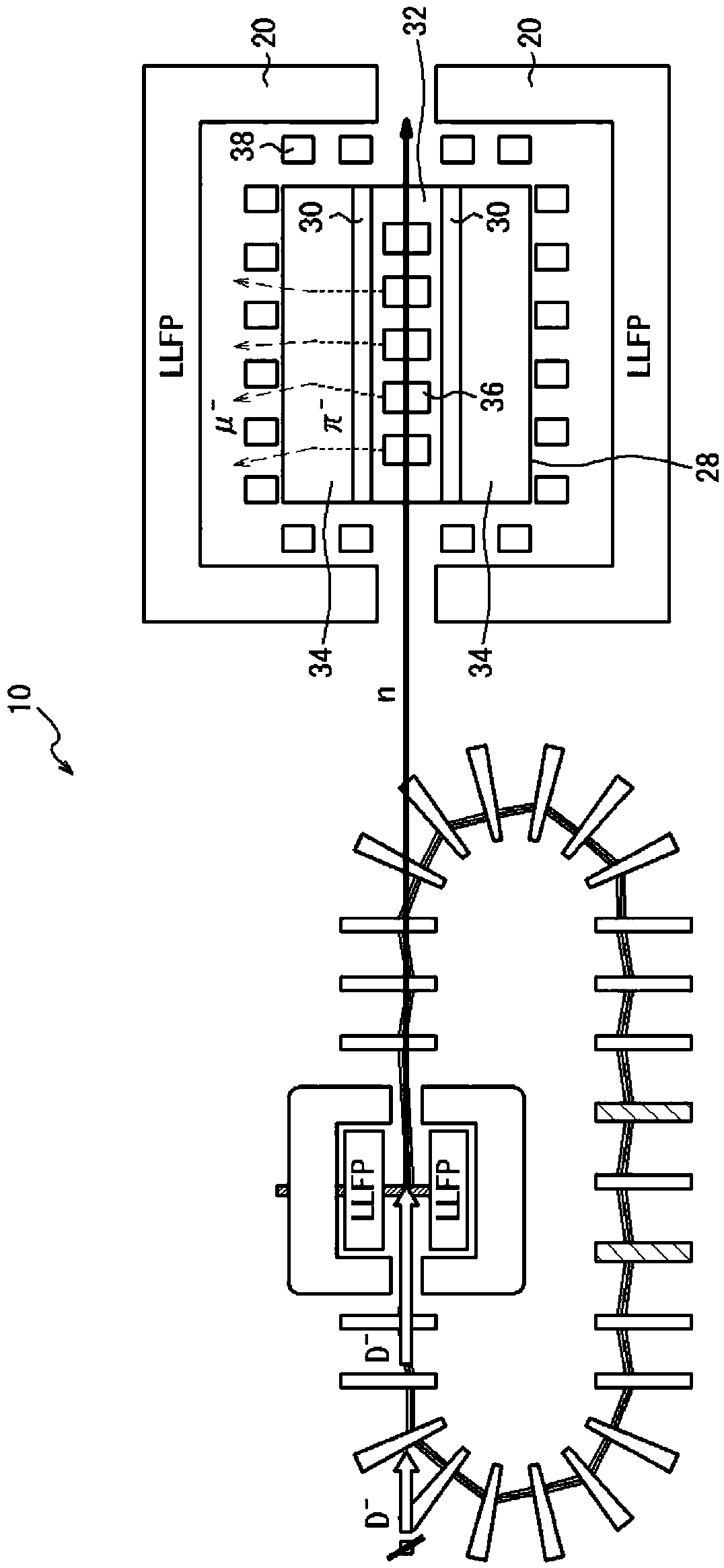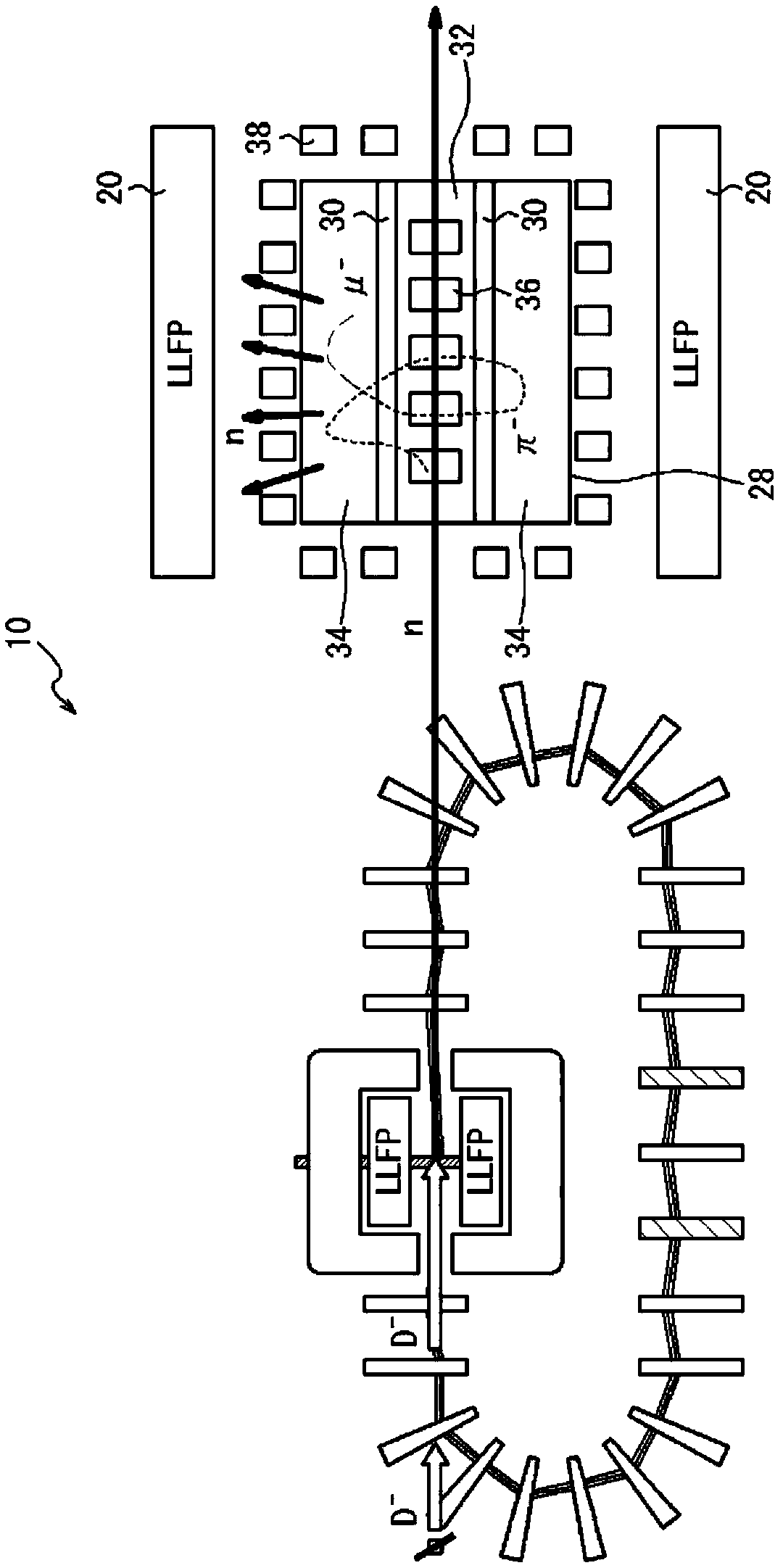Long-lived fission product processing method using neutrons
A technology for fission products and processing methods, applied in neutron sources, targets for generating nuclear reactions, nuclear engineering, etc., can solve problems such as the existence of neutron generating parts, limited locations, and difficult LLFP nuclear transformation processing.
- Summary
- Abstract
- Description
- Claims
- Application Information
AI Technical Summary
Problems solved by technology
Method used
Image
Examples
no. 1 approach
[0052] refer to figure 1 A method for treating long-lived fission products (LLFP) according to one embodiment of the present invention will be described. figure 1 The neutron generation system shown in has an FFAG accelerator 10 , a primary beam source 16 , and a plate-shaped target 18 . The FFAG accelerator 10 is a plurality of sector magnets (sector magnet) 12 and at least one (in figure 1 Two) high-frequency acceleration devices 14 are configured in a ring shape.
[0053] In this FFAG accelerator 10 , primary particles including neutrons are introduced from a primary beam source 16 . The primary particles are not particularly limited as long as they contain neutrons, but deuterium nuclei (that is, deuterons) or tritium nuclei are preferably used. This is because, when these particles collide with the plate-shaped target 18, the above-mentioned break up reaction is easily caused. The energy per nucleon when the primary particles are introduced is preferably 1 / 4 to 1 / 2 of...
no. 2 approach
[0069] refer to figure 2 A method for treating long-lived fission products (LLFP) according to another embodiment of the present invention will be described.
[0070] The structure and structure of high-energy first neutrons and low-energy second neutrons generated by FFAG accelerator 10 figure 1 The first embodiment shown is the same, and thus description thereof will be omitted. In this embodiment, if figure 2 As shown, the first LLFP 20 is not arranged in front of the beam of the first neutron, but the second target 36 placed in the first space 32 of vacuum or atmosphere is arranged, so that the beam of the first neutron and the second target The target 36 collides.
[0071] The structure in the vicinity of the second target 36 will be described. The housing 28 is divided into a first space 32 and a second space 34 by a partition wall 30 . The first space 32 is set to vacuum or air, and the second target 36 is arranged therein. A substance (graphite, etc., not shown...
no. 3 approach
[0076] refer to image 3 A method for treating long-lived fission products (LLFP) according to still another embodiment of the present invention will be described.
[0077] The structure and structure of high-energy first neutrons and low-energy second neutrons generated by FFAG accelerator 10 figure 1 The first embodiment shown is the same, and thus description thereof will be omitted. Furthermore, in this embodiment, with figure 2 Similarly, the first LLFP 20 is not arranged in front of the beam of the first neutron, but the second target 36 placed in the first space 32 of vacuum or atmosphere is arranged so that the beam of the first neutron is in contact with the second target 36. The target 36 collides. Regarding the structure near the second target 36, in this embodiment, the second space 34 is filled with deuterium-tritium molecule (DT molecule) gas at 10 to 100 atmospheres. figure 2 Are the same.
[0078] When the energy of the neutron beam is 300 MeV or more, w...
PUM
 Login to View More
Login to View More Abstract
Description
Claims
Application Information
 Login to View More
Login to View More - R&D
- Intellectual Property
- Life Sciences
- Materials
- Tech Scout
- Unparalleled Data Quality
- Higher Quality Content
- 60% Fewer Hallucinations
Browse by: Latest US Patents, China's latest patents, Technical Efficacy Thesaurus, Application Domain, Technology Topic, Popular Technical Reports.
© 2025 PatSnap. All rights reserved.Legal|Privacy policy|Modern Slavery Act Transparency Statement|Sitemap|About US| Contact US: help@patsnap.com



